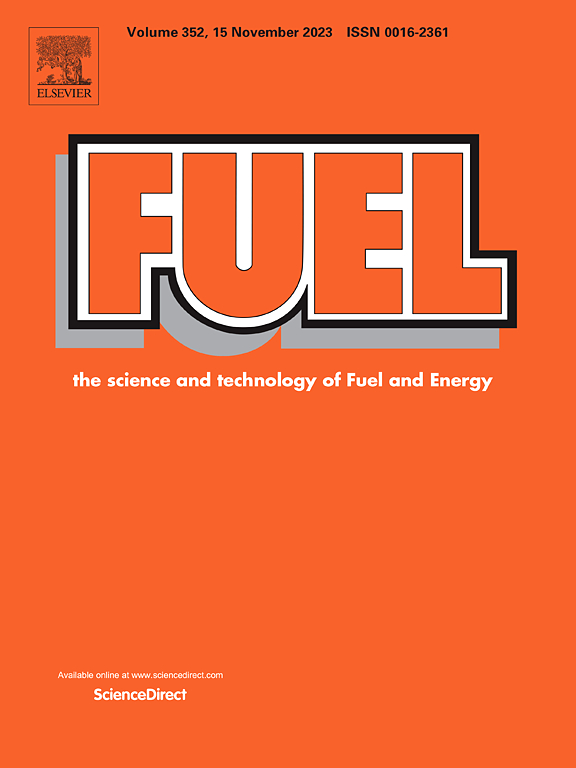Combustion knocking intensity behavior analysis using wavelet approach and optimizing water-emulsified diesel fuel: Engine combustion, performance and emission analysis with novel surfactants
IF 6.7
1区 工程技术
Q2 ENERGY & FUELS
引用次数: 0
Abstract
This research delves into the use of water-emulsified diesel fuel within a compression ignition (CI) engine, specifically examining its endurance and the potential for sustainable energy impact. The research aims to standardize constituent levels to achieve a consistent water-in-diesel emulsion fuel, employing an innovative emulsifier, “Propylene Glycol Monostearate,” in conjunction with Tween 80 and octanol as co-emulsifiers. The thorough analysis covers the engine’s operational efficiency, combustion properties, emissions characteristics, and stability during combustion. An electronically controlled 1-cylinder CI engine, operating at a consistent engine speed, was employed for the study, using water-blended diesel fuels identified as “E0, E10, E20, E30, E40, and E50.” The engine’s performance was scrutinized through parameters including BP, BSFC, and thermal efficiency, while combustion aspects such as Combustion Pressure (CP), HRR, ID, CD, and MFB were analyzed. Furthermore, the investigation included an evaluation of emissions such as CO2, HC, CO, and NOx. To confirm the combustion knocking intensity behavior, a wavelet analysis approach was implemented by using the model on MATLAB. Despite being prepared under room temperature conditions and stored for a hundred days, all water-in-diesel emulsions displayed consistent stability and uniformity. In terms of engine operation, the BSFC exhibited an upward trend across all emulsions as the brake load increased. The water-in-diesel emulsion displayed equivalent performance in reference to diesel. The Ignition Delay (ID) observed in the emulsions was prolonged in comparison to conventional diesel fuel, that was attributed to their lower cetane value and higher oxygen content. Specifically, the longest delay, reaching up to 37.47%, was noted for the E0 emulsion under full load conditions.
Amid the various emulsions tested, E50 consistently exhibited the maximum pressure within the engine cylinder across all brake loads. Additionally, the emission of hydrocarbons (HC) from the emulsion fuels surpassed that of diesel across all brake loads. Moreover, the research also investigated the knocking intensity behavior using the wavelet approach with water-in-diesel emulsions. The GWS analysis revealed higher instability or knocking intensity behavior with E0 emulsion at both 25 and 50% loading condition, whereas E50 emulsion showed higher instability or knocking intensity behavior than diesel and other fuels tested. The WPS and GWS results indicated a similar trend for E30 emulsion as observed for diesel fuel.
To sum up, the mixture of “Propylene Glycol Monostearate” and Tween 80 displays potential novel surfactant to create single phase blends comprising diesel, anhydrous ethanol, and water proving effective across a diverse temperature range. This concoction holds promise as a sustainable engine fuel choice without necessitating extensive engine modifications, considering its favorable fuel properties and positive impact on engine performance. Moreover, the wavelet approach proved valuable for analysing cyclic fluctuations of knocking intensity phenomena, providing valuable perspectives to enhance the creation of a streamlined engine control mechanism. These findings underscore the potential of water-emulsified fuels as a sustainable and eco-friendly alternative, achieving emission reductions and stable engine performance without requiring significant modifications to existing diesel engines.
求助全文
约1分钟内获得全文
求助全文
来源期刊

Fuel
工程技术-工程:化工
CiteScore
12.80
自引率
20.30%
发文量
3506
审稿时长
64 days
期刊介绍:
The exploration of energy sources remains a critical matter of study. For the past nine decades, fuel has consistently held the forefront in primary research efforts within the field of energy science. This area of investigation encompasses a wide range of subjects, with a particular emphasis on emerging concerns like environmental factors and pollution.
 求助内容:
求助内容: 应助结果提醒方式:
应助结果提醒方式:


